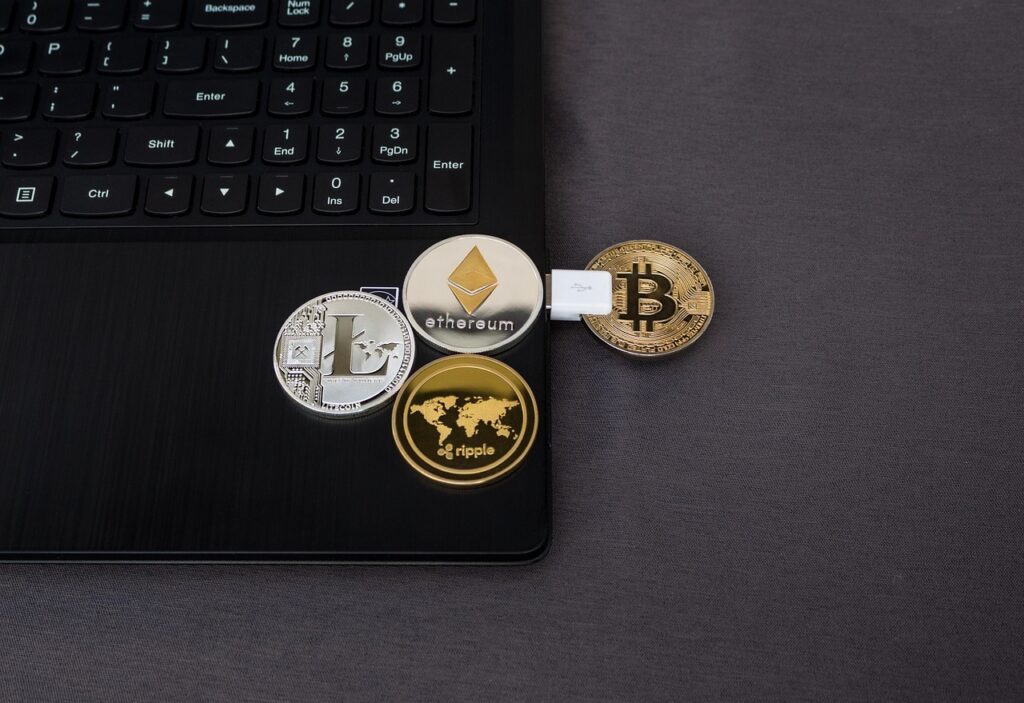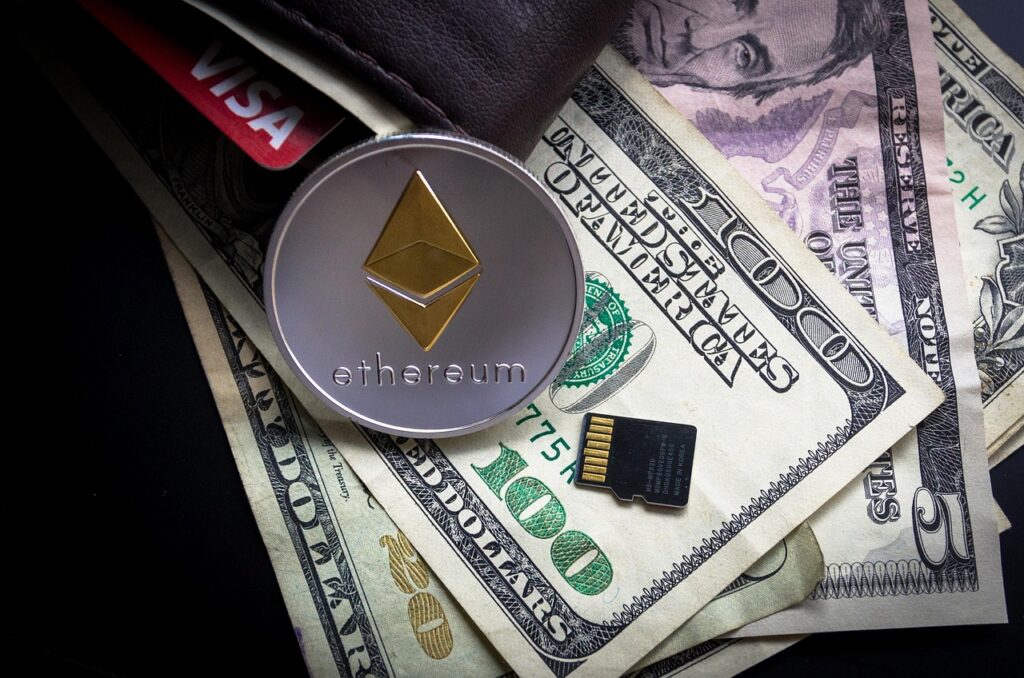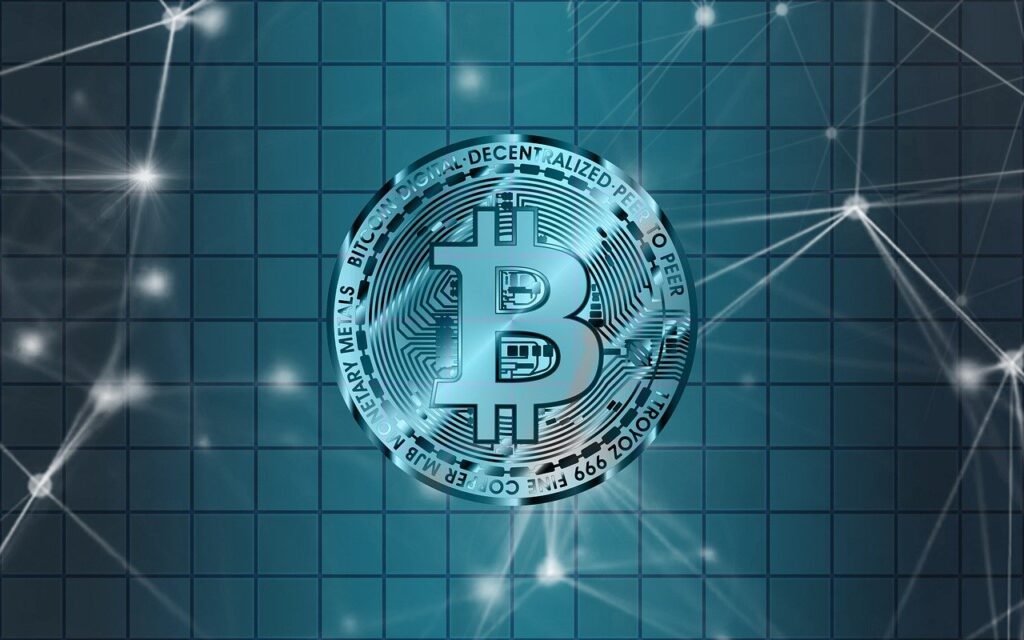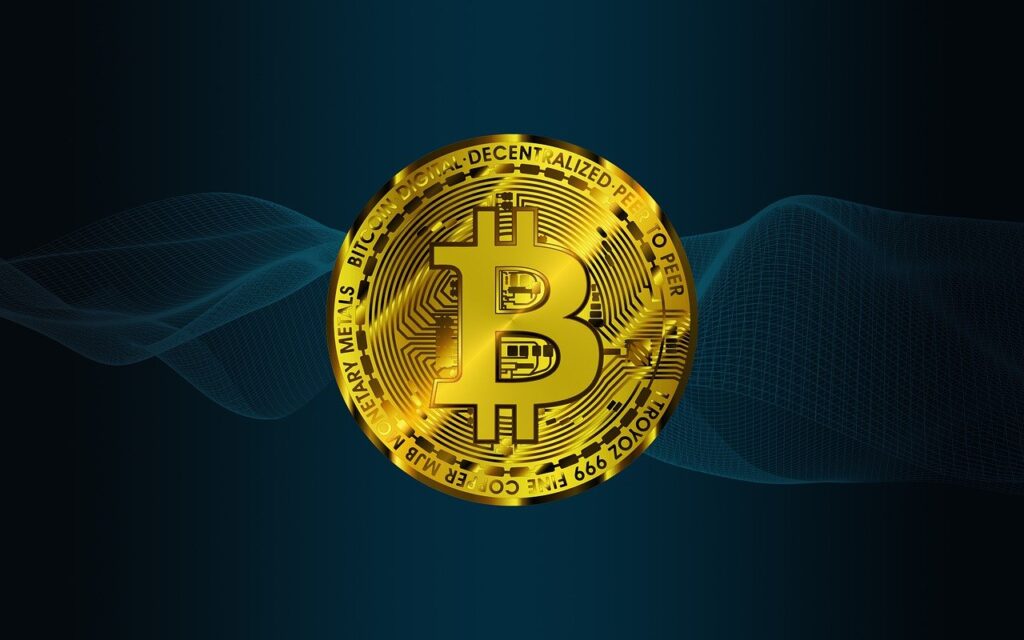In this article, we explore what a contract address is in cryptocurrency and its significance. A contract address is a plain text code that serves as the digital home for a smart contract on a blockchain. We explain how these addresses are generated, how they differ from wallet addresses, and how to verify them to reduce the risk of fraud.
Table of Contents
- 1 The Marvel—and Risk—of Plain Text Addresses
- 2 Defining the Contract Address: Blockchain’s Digital Home
- 3 How Contract Addresses Are Created
- 4 Contract vs. Wallet Address: Key Distinctions
- 5 Blockchain-Specific Formats and Examples
- 6 Why Contract Addresses Matter to Users
- 7 The contract address is critical for verifying the legitimacy of a token.
- 8 Security Risks: Copycats, Scams, and Tokens Gone Wrong
- 9 Checksum Capitalization: Do Those Letters Matter?
- 10 Verifying Contract Addresses: Tools and Best Practices
- 11 Cross-Reference with Official Sources
- 12 Use Blockchain Explorers
- 13 Check for Common Red Flags
- 14 Tools for Automated Verification
- 15 Real‑World Use Cases: DeFi, NFTs, DAOs, DApps
- 16 DeFi
- 17 NFTs
- 18 DAOs
- 19 DApps
- 20 Interacting Safely: How to Use Contract Addresses in Wallets and DEXs
- 21 What Happens When You Send to the Wrong Address?
- 22 Frequently Asked Questions
- 23 What is a contract address in cryptocurrency?
- 24 How is a contract address created?
- 25 How does a contract address differ from a wallet address?
- 26 Can I send tokens to a contract address?
- 27 How can I verify a contract address?
- 28 What happens if I send crypto to the wrong address?
- 29 Why does checksum capitalization matter?
- 30 Are contract addresses the same on all blockchains?
The Marvel—and Risk—of Plain Text Addresses
Cryptocurrency addresses, including contract addresses, are typically represented as long strings of alphanumeric characters. This plain text format is both a marvel and a potential source of risk. The marvel lies in its simplicity: anyone can copy and paste an address to send or receive funds or interact with a smart contract. However, this simplicity also opens the door to errors and malicious activities.
The human readability of these addresses is a double-edged sword. While it makes them easy to share, it also makes them prone to mistakes. A single incorrect character can lead to funds being sent to the wrong address, potentially resulting in permanent loss. This is why careful verification is so important.
Consider these points:
- Addresses are case-sensitive in some blockchains, adding another layer of complexity.
- The lack of inherent error detection in many systems means that typos can go unnoticed until it’s too late.
- Malware can sometimes replace copied addresses with attacker-controlled addresses, leading users to unknowingly send funds to the wrong recipient.
It’s easy to get complacent when dealing with crypto addresses. We copy and paste them all the time without thinking. But that’s exactly when mistakes happen. Always double-check the address, especially the first and last few characters, before sending any funds. It’s a simple step that can save you a lot of heartache.
This is why understanding the structure and verification methods for contract addresses is so important. Knowing how to spot potential errors and scams can protect you from losing your bitcoin compensation in a car accident claim.
Defining the Contract Address: Blockchain’s Digital Home

Think of a contract address as the specific location of a smart contract on a blockchain. It’s like a house number in a vast city, explaining blockchain contract addresses where the city is the blockchain and the house is the smart contract. This address is essential for interacting with the contract and ensuring you’re dealing with the correct one. It’s not a wallet address, but rather an identifier for a piece of code that lives on the blockchain.
Contract addresses are crucial because they allow users and other smart contracts to find and interact with specific smart contracts on the blockchain. Without a unique address, it would be impossible to differentiate between various contracts or to reliably send instructions and data to the intended contract. This is especially important in decentralized applications (dApps) and decentralized finance (DeFi) where multiple smart contracts often work together.
A contract address is a unique identifier, a digital home, for a smart contract on a blockchain. It enables secure and verifiable interactions within the decentralized ecosystem.
Here’s why contract addresses are so important:
- Identification: They uniquely identify each smart contract.
- Interaction: They allow users and other contracts to interact with a specific contract.
- Verification: They help verify the legitimacy of a smart contract.
How Contract Addresses Are Created
Understanding how contract addresses come into existence is key to grasping their significance. It’s not as simple as just picking a random string of characters. The process involves the deployment of smart contract code onto a blockchain, and the resulting address is intrinsically linked to that code.
The creation of a crypto contract address is a deterministic process, meaning that given the same initial conditions, the same address will always be generated.
Think of it like baking a cake. You have a recipe (the smart contract code) and you follow the instructions (the deployment process). The result is a unique cake (the deployed contract) with its own specific characteristics (the contract address).
Here’s a simplified overview:
- Smart Contract Code: A developer writes the smart contract using a language like Solidity (for Ethereum) or Rust (for Solana). This code defines the contract’s functions and logic.
- Compilation: The code is then compiled into bytecode, which is a low-level representation that the blockchain’s virtual machine can understand.
- Deployment Transaction: The compiled bytecode is included in a transaction and sent to the blockchain. This transaction essentially tells the blockchain to create and execute the smart contract.
- Address Generation: The blockchain then generates the contract address based on the address of the deployer and the number of transactions sent from that address. This ensures uniqueness.
It’s important to note that the specific details of address generation can vary slightly depending on the blockchain. For example, how to find a smart contract address on Ethereum might differ from how it’s done on Solana, but the underlying principle remains the same: the address is derived from the deployment transaction and the contract’s code.
Contract vs. Wallet Address: Key Distinctions
It’s easy to mix up contract addresses and wallet addresses, but they serve very different purposes in the crypto world. Think of it this way: a wallet address is like your personal bank account, while a contract address is like the address of a vending machine. You send money to both, but they function in completely different ways.
The main difference lies in what they control: a wallet address controls access to your funds, while a contract address controls the execution of code.
Here’s a breakdown:
- Wallet addresses are used to send and receive cryptocurrencies directly between users.
- Contract addresses represent smart contracts, which are self-executing agreements written in code.
- Wallet addresses are controlled by private keys, while contract addresses are controlled by the code they contain.
Understanding this difference is important. Sending crypto to the wrong type of address can lead to loss of funds. Always double-check before sending!
Think of it like this:
| Feature | Wallet Address | Contract Address |
| Purpose | Send/Receive funds between users | Execute code, manage token functions |
| Control | Private Key | Smart Contract Code |
| Functionality | Stores and manages cryptocurrency holdings | Automates tasks, manages tokens, and runs DApps |
| Human Interaction | Directly controlled by a user | Interacted through transactions |
It’s also worth noting that crypto wallets store private keys, which are essential for managing your funds. Hot wallets offer convenience, while cold wallets provide enhanced security. Choosing the right wallet depends on your individual needs and risk tolerance.
Blockchain-Specific Formats and Examples
Each blockchain network has its own way of formatting contract addresses. It’s like how different countries have different formats for phone numbers or postal codes. Understanding these differences is important to avoid errors when sending or receiving assets.
Let’s look at some examples:
- Ethereum (ETH): Ethereum contract addresses are probably the most well-known. They start with 0x followed by 40 hexadecimal characters. For example, 0xdAC17F958D2ee523a2206206994597C13D831ec7 is the contract address for USDT on Ethereum. Ethereum was the blockchain’s cornerstone for smart contracts.
- Binance Smart Chain (BSC): BSC addresses look almost identical to Ethereum addresses because BSC is based on Ethereum. They also start with 0x and have 40 hexadecimal characters. The key difference is that they operate on the Binance Smart Chain network. For example, a contract address on BSC might be 0x0e09fabb73aa6e1a0ad3465abd63832eed9a3a87.
- Solana (SOL): Solana uses a different format. Solana addresses are longer and use a base58 encoding. They don’t start with 0x. A typical Solana contract address looks something like this: EjNcVjnjDXPj1yj96nK62eWPTQmrwYgPUWzbp1wnGq9V.
It’s easy to mix up addresses if you’re not careful. Always double-check the network and the address format before sending any cryptocurrency. Sending to the wrong network can result in permanent loss of funds.
Here’s a table summarizing the different formats:
| Blockchain | Address Format | Example |
| Ethereum (ETH) | 0x followed by 40 hexadecimal characters | 0xdAC17F958D2ee523a2206206994597C13D831ec7 |
| Binance Smart Chain | 0x followed by 40 hexadecimal characters | 0x0e09fabb73aa6e1a0ad3465abd63832eed9a3a87 |
| Solana (SOL) | Base58 encoded, longer than Ethereum/BSC | EjNcVjnjDXPj1yj96nK62eWPTQmrwYgPUWzbp1wnGq9V |
It’s also worth noting that some blockchains have test networks (testnets) with their address formats. These are used for development and testing purposes. Make sure you’re using the correct network and address format for the environment you’re working in. Coins operate on their blockchains, offering direct control, while tokens run on existing blockchains.
Why Contract Addresses Matter to Users

Contract addresses are way more important than many new crypto users realize. They’re not just random strings of characters; they’re the key to interacting with smart contracts, which are the backbone of a lot of what happens in DeFi and the broader crypto space. Understanding them can save you from scams and help you make informed decisions.
The contract address is critical for verifying the legitimacy of a token.
Think of it this way: if you’re buying a token, the contract address is like the address of the company headquarters. You wouldn’t send money to a random address someone gave you, right? You’d want to verify it. Same goes for crypto.
It’s easy to get caught up in the hype around a new token or project, but taking the time to double-check the contract address against official sources is a simple step that can prevent a lot of headaches down the road. Always verify the CA through multiple official sources before trading or adding it to your wallet. Remember, once your funds are sent to a smart contract, the transaction is irreversible.
Here’s why they matter:
- Avoiding Scams: Scammers often create fake tokens with similar names but different contract addresses. Always double-check the official website or community channels.
- Direct Interaction: Contract addresses let you interact with tokens directly on decentralized exchanges (DEXs) like PancakeSwap or Uniswap, even before they’re listed on major exchanges. This can be useful for getting in early on promising projects.
- Verifying Authenticity: They help you confirm that you’re interacting with the correct smart contract, especially when new versions or upgrades are released. Projects should clearly communicate any changes to their contract address.
The importance of smart contract addresses in DeFi can’t be overstated. They’re your first line of defense against fraud and a tool for accessing the full potential of decentralized finance.
Security Risks: Copycats, Scams, and Tokens Gone Wrong

The world of cryptocurrency, while innovative, is unfortunately rife with security risks. It’s important to be aware of these dangers to protect your investments. Scammers are constantly finding new ways to exploit vulnerabilities, and users need to stay vigilant. One of the most common tactics involves creating copycat tokens with similar names but different contract addresses. This can easily trick unsuspecting individuals into buying the wrong asset.
Here’s a breakdown of some common security risks:
- Copycat Tokens: Scammers create fake tokens with names similar to legitimate projects, hoping users will mistakenly purchase them. Always verify the contract address.
- Phishing Scams: These involve deceptive emails, messages, or websites designed to steal your private keys or other sensitive information. Never click on suspicious links or share your private information.
- Rug Pulls: Developers abandon a project after raising funds, leaving investors with worthless tokens. Research the team and project thoroughly before investing.
- Airdrop Scams: Fraudulent airdrops request wallet connections or fees, potentially draining your assets. Always verify airdrops through official channels.
It’s important to remember that the crypto space is still relatively new and unregulated. This makes it easier for scammers to operate. Always do your research and be cautious before investing in any project.
It’s also worth noting that even well-intentioned projects can have vulnerabilities. Smart contracts, while designed to be secure, can contain bugs that can be exploited by hackers. The infamous attack on Ethereum’s decentralized autonomous organization (DAO) in 2016 serves as a stark reminder of this risk. Inadequate code auditing can lead to severe consequences.
To stay safe, always double-check a token before adding it to your wallet or trading it. Be cautious of projects with no accessible whitepaper or official website. Staying informed about simple terms like CA can make a significant difference in your security and trading decisions in the fast-moving crypto space.
Checksum Capitalization: Do Those Letters Matter?
One of the quirks of some blockchain addresses, particularly on Ethereum, is the mixed-case format known as checksum capitalization. It might look random, but there’s a method to the madness. Let’s break it down.
Checksum capitalization is a way to help prevent errors when manually entering or copying and pasting addresses.
Think of it as a built-in error detection system. The capitalization isn’t just for show; it’s derived from the address itself using a cryptographic hash function. Wallets and other tools can use this capitalization to verify that the address hasn’t been mistyped. If even one letter is wrong, the checksum will fail, and the wallet will (hopefully) warn you before you send funds into the void.
It’s important to note that not all blockchains use checksum capitalization. Bitcoin, for example, uses a different method for error detection. So, don’t expect to see mixed-case addresses everywhere in the crypto world.
While checksum capitalization adds a layer of security, it’s not foolproof. Always double-check the full address, especially when dealing with large amounts of cryptocurrency. A visual inspection can catch errors that the checksum might miss, and it’s always better to be safe than sorry.
Here’s a quick rundown:
- Purpose: Error detection during manual entry.
- Blockchain: Primarily Ethereum and some other EVM-compatible chains.
- Mechanism: Cryptographic hash-based capitalization.
- Benefit: Reduces the risk of sending funds to the wrong address due to typos.
It’s a small detail, but understanding checksum capitalization can save you from potential headaches and lost funds. Always pay attention to the details when dealing with crypto news articles and addresses.
Verifying Contract Addresses: Tools and Best Practices
It’s easy to get tricked in the crypto world, so knowing how to check if a contract address is the real deal is super important. There are a few ways to do this, and it’s worth taking the time to learn them. It can save you from losing money to scams.
Cross-Reference with Official Sources
Always, always, always double-check the contract address with official sources. I can’t stress this enough. Don’t just grab it from some random Telegram group. Go to the project’s official website, their official Twitter account, or their official Discord server. If they’ve had a third-party audit, check the auditor’s report too. This is your first line of defense. It’s a simple step, but it’s amazing how many people skip it. This is a great guide to verifying token contract addresses.
Use Blockchain Explorers
Blockchain explorers like Etherscan (for Ethereum) or BscScan (for Binance Smart Chain) are your friends. Plug the contract address into the explorer and take a look around. Check the transaction history. Does it look legit? Are there a lot of transactions? Does the contract interact with other well-known contracts? Also, look at the contract creator address. Is it a known address or some random, brand-new one? If something feels off, trust your gut.
Check for Common Red Flags
There are some common red flags to watch out for. If the project’s website is down or the whitepaper is missing, that’s a huge warning sign. If the team is anonymous or uses stock photos, be very careful. If the contract address is only being shared in shady corners of the internet, stay away. If something seems too good to be true, it probably is.
Verifying contract addresses is not just a good idea; it’s a necessity. The crypto space is full of scams, and taking a few extra minutes to do your due diligence can save you a lot of heartache and money. Don’t rush into anything. Take your time, do your research, and stay safe. It’s all about locating token contract addresses safely.
Tools for Automated Verification
Some tools can help automate the verification process. These tools often check for things like known vulnerabilities in the contract code or whether the contract has been verified on the blockchain explorer. While these tools can be helpful, don’t rely on them completely. Always do your research, too.
Real‑World Use Cases: DeFi, NFTs, DAOs, DApps
It’s easy to talk about what contract addresses are, but seeing them in action drives home their importance. They’re not just abstract concepts; they’re the backbone of some of the most exciting innovations in the crypto space. Let’s look at some examples.
DeFi
Decentralized Finance dApps (DeFi) is where contract addresses truly shine. Think about it: lending platforms, decentralized exchanges (DEXs), and yield farming protocols all rely on smart contracts. Each of these contracts has a unique address, acting as the gateway to interact with the protocol. When you deposit tokens into a lending pool, you’re essentially sending them to the contract address of that pool. The contract then manages the lending, borrowing, and interest distribution according to its programmed rules. It’s all automated and transparent, thanks to the immutability of the blockchain.
NFTs
Non-Fungible Tokens (NFTs) are another prime example. Each NFT is associated with a smart contract, and that contract has an address. This address is where the metadata for the NFT is stored, including the image, description, and other attributes. When you buy, sell, or trade an NFT, you’re interacting with the contract address that governs that specific NFT collection. The contract ensures the uniqueness and ownership of each token.
DAOs
Decentralized Autonomous Organizations (DAOs) use contract addresses to manage their governance and operations. A DAO’s rules are encoded in a smart contract, and the contract address serves as the organization’s digital headquarters. Token holders can vote on proposals by interacting with the contract, and the contract automatically executes the decisions based on the voting results. This creates a transparent and democratic way to manage a project or organization.
DApps
Decentralized Applications (DApps) are built on top of blockchains and use smart contracts to provide various services. From social media platforms to gaming applications, DApps rely on contract addresses to manage user data, execute transactions, and enforce the application’s logic. The contract address is the entry point for users to interact with the DApp and access its features.
Contract addresses are the unsung heroes of the decentralized world. They enable trustless interactions, automate complex processes, and empower users to participate in innovative applications. Without them, DeFi, NFTs, DAOs, and DApps wouldn’t be possible.
Interacting Safely: How to Use Contract Addresses in Wallets and DEXs
Okay, so you’ve got a handle on what contract addresses are and why they’re important. Now, let’s talk about actually using them without losing your shirt. It’s not rocket science, but a little caution goes a long way.
Always double-check the contract address against official sources before interacting with it.
Using contract addresses in wallets and decentralized exchanges (DEXs) is pretty common, especially if you’re trying to get in on a new token early or interact with a specific decentralized application (dApp). But here’s the deal: it’s also where a lot of scams happen. So, pay attention!
Let’s say you’re trying to buy a token that just launched. You head over to a DEX like PancakeSwap or Uniswap. You’ll need the contract address to add the token to your list so you can trade it. This is where things can get dicey. Scammers love to create fake tokens with similar names but different contract addresses. If you add the wrong one, you could end up buying something worthless.
The key is verification. Don’t just grab a contract address from a random Telegram group or some shady website. Go to the project’s official website, their official Twitter account, or their official Discord. Cross-reference the address from multiple sources to make sure they all match. If something seems off, trust your gut and walk away.
Here’s a quick rundown of how to add a token using a contract address in a wallet like MetaMask:
- Open your MetaMask wallet.
- Click “Import tokens”.
- Paste the contract address into the “Token address” field.
- If the token is legitimate, MetaMask should automatically fill in the “Token symbol” and “Token decimal” fields. If it doesn’t, be extra cautious.
You can also use a smart contract’s blockchain address to interact with the contract directly. This is useful if you want to do something that’s not supported by the standard interface, like calling a specific function. But again, be careful! Make sure you know what you’re doing before you start messing around with the contract code.
So, the bottom line is: be vigilant, double-check everything, and don’t be afraid to ask for help if you’re not sure about something. A little bit of caution can save you a lot of headaches (and money) in the long run.
What Happens When You Send to the Wrong Address?
Okay, so you’ve got your crypto ready to go, and you’re about to send it off. But what if you mess up the address? It’s a pretty common fear, and for good reason. Sending crypto to the wrong address can be a real headache, and sometimes, it means your funds are gone for good. Let’s break down what can happen.
The first thing to understand is that cryptocurrency transactions are generally irreversible. Once a transaction is confirmed on the blockchain, it’s extremely difficult, if not impossible, to get your funds back. There are a few scenarios that could play out, and none of them are particularly fun.
- The address doesn’t exist: If you send crypto to an address that isn’t valid on that particular blockchain, the transaction will usually fail. Your wallet should give you an error message, and your funds will likely remain in your wallet. This is the best-case scenario.
- The address belongs to someone else: This is where things get tricky. If the address exists and belongs to another person, your funds are now in their possession. Whether they return them is entirely up to them, and legally, there might not be much you can do to force their hand.
- The address is a contract address: Sending funds to a contract address can have varying outcomes. Some contracts are designed to accept funds, while others aren’t. If the contract isn’t designed to receive funds, your crypto could be lost permanently. Always double-check before sending to a contract address.
It’s really important to double, triple, and even quadruple-check the address before you hit that send button. Small errors can lead to big losses, and in the world of crypto, mistakes can be costly.
It’s also worth noting that some exchanges or wallets might offer some limited assistance in recovering funds sent to the wrong address, but this is rare and often comes with fees and no guarantee of success. Prevention is better than a cure in this case.
Frequently Asked Questions
What is a contract address in cryptocurrency?
A contract address is a unique ID on a blockchain that points to a smart contract’s code. It acts like a digital home where the contract lives and runs its programmed rules.
How is a contract address created?
When a developer deploys a smart contract, the blockchain network records it and assigns a fixed address. That address remains the same, so anyone can interact with the same contract code.
How does a contract address differ from a wallet address?
A wallet address belongs to a person or entity holding private keys and can move funds freely. A contract address belongs to code and follows only the logic it was programmed with, without private keys.
Can I send tokens to a contract address?
Only if the contract is designed to accept those tokens. Sending the wrong type of token or using an incorrect address can lead to permanent loss, since most blockchains don’t allow reversals.
How can I verify a contract address?
Always copy the address from official project sources or trusted block explorers. Paste it into a search field to confirm it matches the one published by the project team.
What happens if I send crypto to the wrong address?
Most blockchain transactions are irreversible. If you send funds to the wrong contract or wallet address, you won’t be able to recover them. Always double-check before confirming a transfer.
Why does checksum capitalization matter?
Some blockchains, like Ethereum, use a mix of upper- and lower-case letters to help detect typos. An address with the wrong capitalization may be rejected or could send funds to the wrong place.
Are contract addresses the same on all blockchains?
No. Each blockchain has its own address style and length. For example, an Ethereum contract address differs in format from one on Binance Smart Chain or Polygon.














